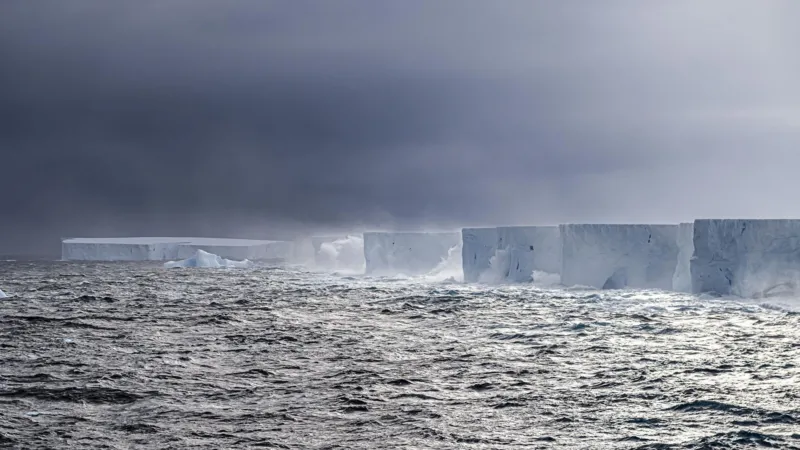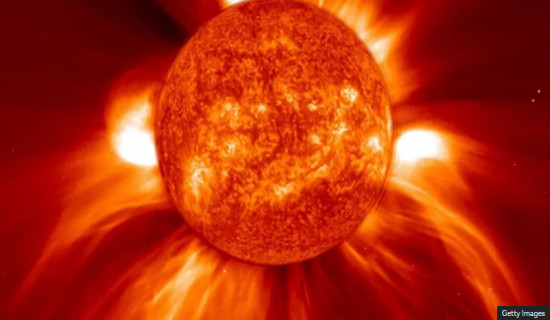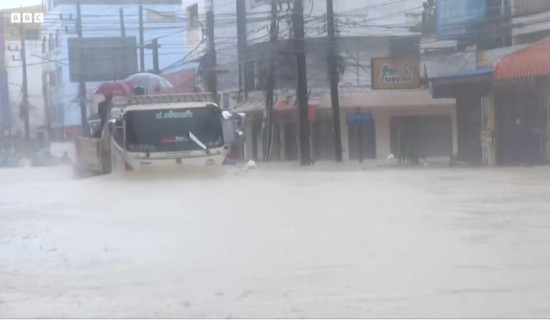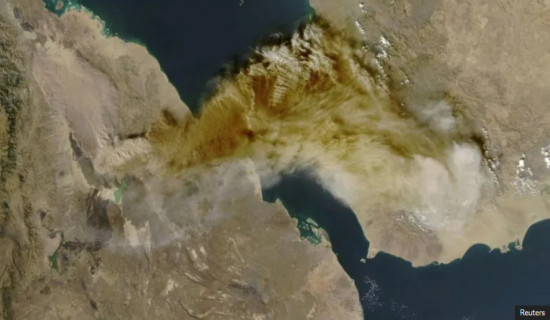- Wednesday, 3 December 2025
World's biggest iceberg spins in ocean trap
By Jonathan Amos and Erwan Rivault, Aug 4: Something remarkable has happened to A23a, the world's biggest iceberg.
For months now it has been spinning on the spot just north of Antarctica when really it should be racing along with Earth's most powerful ocean current.
Scientists say the frozen block, which is more than twice the size of Greater London, has been captured on top of a huge rotating cylinder of water.
It's a phenomenon oceanographers call a Taylor Column - and it's possible A23a might not escape its jailer for years.
"Usually you think of icebergs as being transient things; they fragment and melt away. But not this one," observed polar expert Prof Mark Brandon.
"A23a is the iceberg that just refuses to die," the Open University researcher told BBC News.
The Berg's longevity is well documented. It broke free from the Antarctic coastline way back in 1986, but then almost immediately got stuck in the bottom muds of the Weddell Sea.
For three decades it was a static "ice island". It didn't budge. It wasn't until 2020 that it re-floated and started to drift again, slowly at first, before then charging north towards warmer air and waters.
In early April this year, A23a stepped into the Antarctic Circumpolar Current (ACC) - a juggernaut that moves a hundred times as much water around the globe as all Earth's rivers combined.
This was meant to put boosters on the near-trillion-tonne berg, rifling it up into the South Atlantic and certain oblivion.
Instead, A23a went precisely nowhere. It remains in place just north of South Orkney Islands, turning in an anti-clockwise direction by about 15 degrees a day. And as long as it does this, its decay and eventual demise will be delayed.
A23a has not grounded again; there is at least a thousand metres of water between its underside and the seafloor.
It's been stopped in its tracks by a type of vortex first described in the 1920s by a brilliant physicist, Sir G.I. (Geoffrey Ingram) Taylor.
The Cambridge academic was a pioneer in the field of fluid dynamics and was even brought into the Manhattan Project to model the likely stability of the world's first atomic bomb test.
Prof Taylor showed how a current that meets an obstruction on the seafloor can - under the right circumstances - separate into two distinct flows, generating a full-depth mass of rotating water between them.
In this instance, the obstruction is a 100km-wide bump on the ocean bottom known as Pirie Bank. The vortex sits on top of the bank, and for now, A23a is its prisoner.
"The ocean is full of surprises, and this dynamic feature is one of the cutest you'll ever see," said Prof Mike Meredith from the British Antarctic Survey.
"Taylor Columns can also form in the air; you see them in the movement of clouds above mountains. They can be just a few centimetres across in an experimental laboratory tank or absolutely enormous as in this case where the column has a giant iceberg slap-bang in the middle of it."
How long might A23a continue to perform its spinning-top routine?
Who knows, but when Prof Meredith placed a scientific buoy in a Taylor Column above another bump to the east of Pirie Bank, the floating instrument was still rotating in place four years later.
A23a is a perfect illustration once again of the importance of understanding the shape of the seafloor.
Submarine mountains, canyons and slopes have a profound influence on the direction and mixing of waters, and on the distribution of the nutrients that drive biological activity in the ocean.
And this influence extends also to the climate system: it's the mass movement of water that helps disperse heat energy around the globe.
A23a's behaviour can be explained because the ocean bottom just north of South Orkney is reasonably well surveyed.
That's not the case for much of the rest of the world.
Currently, only a quarter of Earth's seafloor has been mapped to the best modern standard.
















